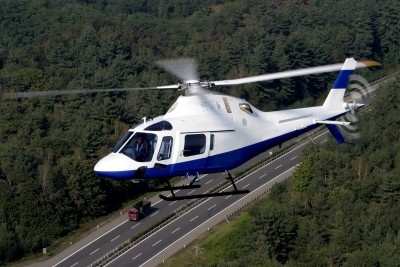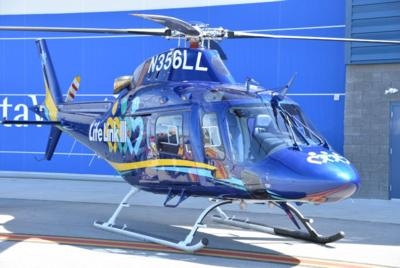Tue, Dec 29, 2020
AD 2020-26-10 Requires Revising The Existing Rotorcraft Flight Manual (RFM)
The FAA is adopting a new airworthiness directive (AD) for all Leonardo S.p.a. (Leonardo) Model A119 and AW119 MKII helicopters.

This AD requires revising the existing Rotorcraft Flight Manual (RFM) for your helicopter and installing a placard to prohibit intentional entry into autorotation. This AD would also allow replacement of an affected fuel control unit (FCU) as an optional terminating action for the RFM revision and placard installation. This AD was prompted by reports that certain FCUs may not have been calibrated to specification during overhaul. The actions of this AD are intended to address an unsafe condition on these products. This AD is effective February 1, 2021.
Supplementary Information: The FAA issued a notice of proposed rulemaking (NPRM) to amend 14 CFR part 39 by adding an AD that would apply to all Leonardo Model A119 and AW119 MKII helicopters. The NPRM published in the Federal Register on June 11, 2020 (85 FR 35602). The NPRM proposed to require revising the Limitations Section of the existing RFM for your helicopter and installing a placard to prohibit intentional entry into autorotation. The NPRM also proposed to allow replacing affected FCUs with non-affected FCUs as an optional terminating action for the RFM revision and placard installation. The proposed requirements were intended to address certain FCUs that may not have been calibrated to specification during overhaul, which can lead to N1 fluctuations, hung engine starts, and the inability to recover power during autorotation training, and possibly result in reduced control of the helicopter.

The NPRM was prompted by EASA AD 2018-0124, dated June 5, 2018, issued by EASA, which is the Technical Agent for the Member States of the European Union, to correct an unsafe condition for all Leonardo Model A119 and AW119 MKII helicopters. EASA advises that certain FCUs may not have been calibrated to specification during overhaul, and that this condition, if not corrected, can lead to N1 fluctuations, hung engine starts, and the inability to recover power during autorotation training, possibly resulting in reduced control of the helicopter. To address this unsafe condition, the EASA AD requires amendment of the applicable RFM and installation of a placard to prohibit intentional entry into autorotation. The EASA AD also allows removal of the RFM limitation and placard after replacement of an affected FCU.
More News
He Attempted To Restart The Engine Three Times. On The Third Restart Attempt, He Noticed That Flames Were Coming Out From The Right Wing Near The Fuel Cap Analysis: The pilot repor>[...]
Make Sure You NEVER Miss A New Story From Aero-News Network Do you ever feel like you never see posts from a certain person or page on Facebook or Instagram? Here’s how you c>[...]
From 2009 (YouTube Edition): Leading Air Show Performers Give Their Best Advice for Newcomers On December 6th through December 9th, the Paris Las Vegas Hotel hosted over 1,500 air >[...]
Aero Linx: NASA ASRS ASRS captures confidential reports, analyzes the resulting aviation safety data, and disseminates vital information to the aviation community. The ASRS is an i>[...]
“For our inaugural Pylon Racing Seminar in Roswell, we were thrilled to certify 60 pilots across our six closed-course pylon race classes. Not only did this year’s PRS >[...]
 NTSB Final Report: Rutan Long-EZ
NTSB Final Report: Rutan Long-EZ ANN FAQ: Turn On Post Notifications
ANN FAQ: Turn On Post Notifications Classic Aero-TV: ICAS Perspectives - Advice for New Air Show Performers
Classic Aero-TV: ICAS Perspectives - Advice for New Air Show Performers ANN's Daily Aero-Linx (06.28.25)
ANN's Daily Aero-Linx (06.28.25) Aero-News: Quote of the Day (06.28.25)
Aero-News: Quote of the Day (06.28.25)




